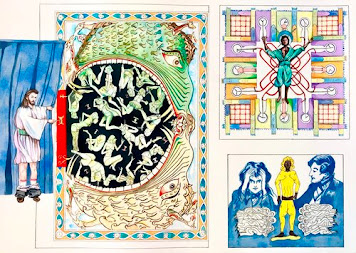Feminist Art
What have artists brought to feminist
struggles?
an article, which has become cult, in which she
then takes up the ingenuous question of a gallery owner friend, and answers it
by shedding light on the conditions of the impediment of female artists. Nearly
fifty years later, three American academics (Lucinda Gosling, Hilary Robinson
and Amy Tobin) unite to highlight the essential role of artists in feminist
struggles. Or how, through the image, a whole fight is shaped. We take a look
back, in five questions, on the writing of this (very) beautiful book, which
evokes both education and exhibition conditions as well as the political impact
of female art.
“Bethe
Morison has succeeded, thanks to her rich and bourgeois environment, in using
her artistic education to forge a career. "
The first artist
Lucinda
Gosling: Bethe Motorist is interesting because she was at the center of the
first truly disruptive artistic movement - the Impressionists - and painted in
an extremely savant-grade style for the time; however, his subjects are often
borrowed from the domestic sphere, with members of his family, fashionable
interiors, etc.
I like this
dichotomy and the fact that she made her own choices. Women painters of
previous generations generally owed their success to their clients, but Bethe
Motorist succeeded, thanks to her wealthy and bourgeois environment, in using
her artistic education to forge a career, choose her subjects and exhibit her
paintings alongside painters. men. Her work is the reflection of a feminine
universe, certainly privileged but often constrained, and rendered with
breathtaking talent.
What role did feminist imagery play in
the struggle for the vote for women?
Lucinda
Gosling:The art and the suffragette movement were intimately linked; even
today, we associate the latter with certain powerful images. Many activistswere artists, which is not surprising considering the obstacles they could also
encounter in the art world. They used their drawing skills to create one of the
world's first "visual identities" ... And it is interesting to
compare the art of the suffragettes, which was always of great quality, with
that of the anti-right campaign. vote of women, often rudimentary and vulgar.
From banners designed by Mary Lowness to murals by Sylvia Pankhurst,
suffragette art presents a strong, intelligent and worthy vision of the women's
movement, with many allegorical figures symbolizing the struggle for equality.
What's also interesting is that suffragists celebrated their femininity instead
of covering it up, for example by dressing fashionably, or giving mothers and
older women as prominent a place as working women. and educated.

Comments
Post a Comment